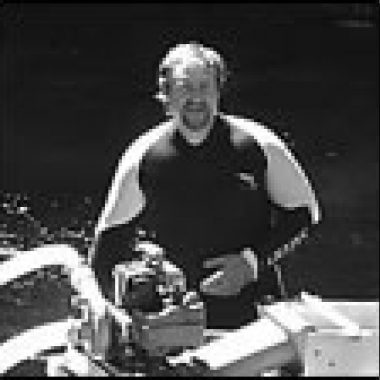Ask The Experts
Ask The Experts - Can a detonation help determine the size and location of basalt?
December 2018 by Chris Ralph
Q: There is an outcrop of greenstone basalt in granite I saw at an elevation of 4,300 feet. Next to it is a chlorite schist outcrop and a mafic ore outcrop. Along the east-west fault for about 100 yards is a green porphyry and at approximately 2,000 feet is a clay-sandstone upthrust that when deteriorated turns green. Along this fault, greenstone basalt debris can be found including a large basaltic boulder over the sandstone.
If the basalt originates at sea floor does that mean it rose at least 4,300 feet and could extend vertically intact that distance above sea level? The next question would be if a detonation in the basalt could send sensory detectable signals to give its size and location as done with petroleum exploration? Thank you for your time.
Joe
A: While a lot of greenstone metamorphosed basalt was originally formed on the ocean floor, any basalt, no matter where it was originally formed, if it is subject to the right types of heat and pressure, will end up as the same greenstone metamorphosed basalt. Your observation that the forces of the earth’s plates moving around has pushed up mountain ranges is certainly true. The plates moving past each other also scrape off material from one plate onto another. The Pacific Plate has been pushing stuff onto the North American continent for a long time. That’s how rocks formed deep in the Pacific Ocean ended up on the tops of mountains in central Nevada.
One other thing to note is that the effect of weathering on the surface of the ground can change the appearance of many types of rocks. Greenstone metamorphosed basalt will weather to other appearances.
Seismic exploration using a small detonation blast to determine the depth and types of bedrock down in the ground has been used for decades in the petroleum industry, but is only now coming into common use in metals exploration. You are correct that this technique can be used to determine the location of faults and contact of different types of rock. It has the advantage that seismic exploration can often see deeper than other geophysical techniques.
Ask the Experts
What is the ceramic-like material embedded with gold?
Ask the Experts: More suggestions for dealing with metallic trash....
Q: Thanks for the great article in the recent ICMJ [“Metallic Trash—Scourge of the Prospector,” July 2012]...
Ask The Experts - True north or magnetic north?
Ask the Experts
Using GIS systems to aid in mapping.
Subscription Required:
The Bawl Mill
• Legislative and Regulatory Update
• Ask The Experts - LR 2000, ArcGIS, and other mapping applications
• Ask The Experts - Advice for a new prospector in Placerville, California?
• Placer Gold Deposits of Utah
• Proven Strategies for Detecting Gold
• Gold Prospecting for Better or Worse: Lesson Learned
• Time to Come Home
• Gold Indicators—What to Look for in the Goldfields
• The Rest of the Story—Detecting With Ray Mills
• Gold and Mining Stocks Will Rebound—But When?
• Melman on Gold & Silver
• Mining Stock Quotes and Mineral & Metal Prices
Free:
On the fence about subscribing? Want to check out a 3D sample issue?
• Resurrecting An Old Hard Rock Mine
• PLP Update








